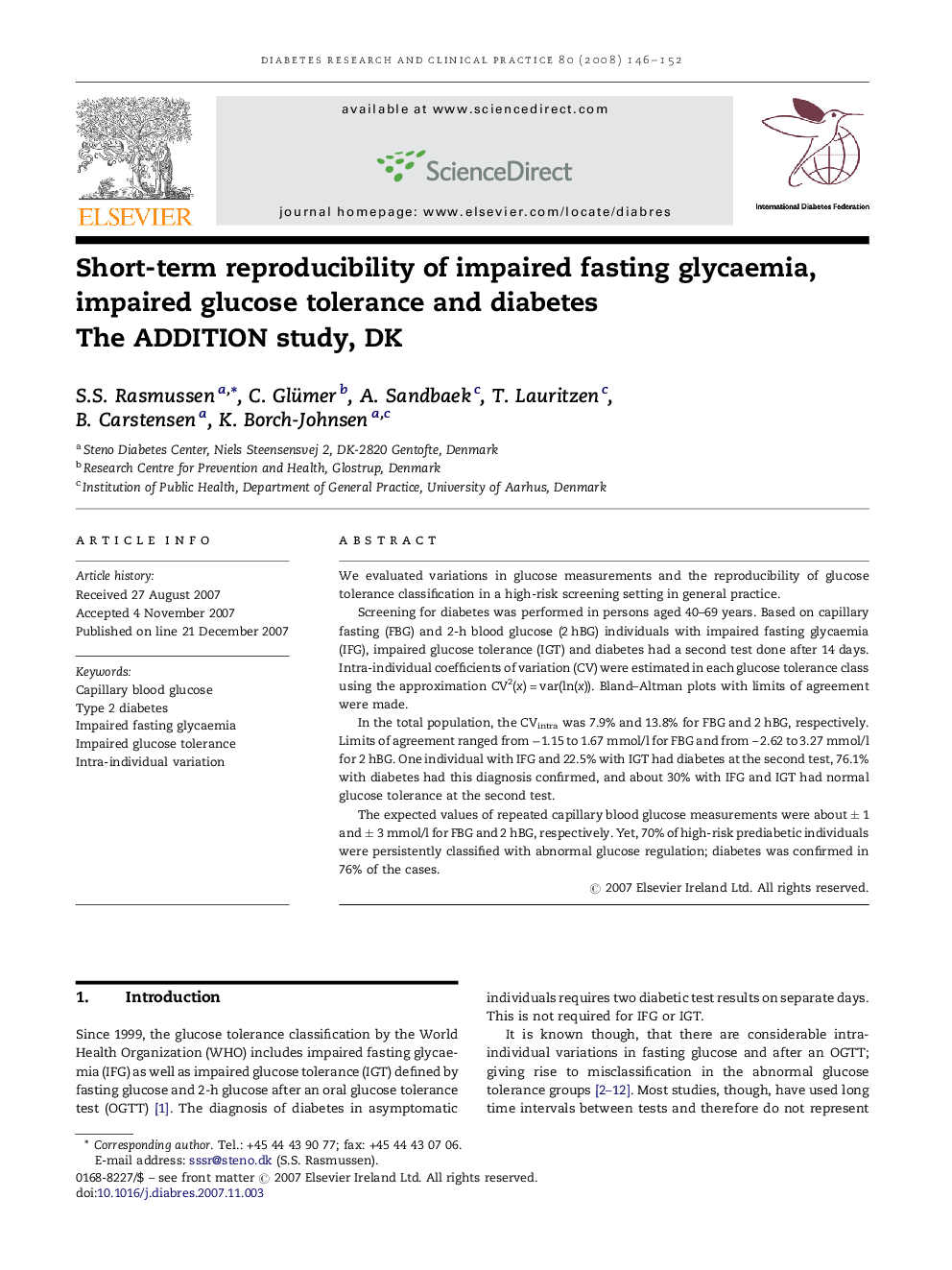| Article ID | Journal | Published Year | Pages | File Type |
|---|---|---|---|---|
| 2798324 | Diabetes Research and Clinical Practice | 2008 | 7 Pages |
We evaluated variations in glucose measurements and the reproducibility of glucose tolerance classification in a high-risk screening setting in general practice.Screening for diabetes was performed in persons aged 40–69 years. Based on capillary fasting (FBG) and 2-h blood glucose (2 hBG) individuals with impaired fasting glycaemia (IFG), impaired glucose tolerance (IGT) and diabetes had a second test done after 14 days. Intra-individual coefficients of variation (CV) were estimated in each glucose tolerance class using the approximation CV2(x) = var(ln(x)). Bland–Altman plots with limits of agreement were made.In the total population, the CVintra was 7.9% and 13.8% for FBG and 2 hBG, respectively. Limits of agreement ranged from −1.15 to 1.67 mmol/l for FBG and from – 2.62 to 3.27 mmol/l for 2 hBG. One individual with IFG and 22.5% with IGT had diabetes at the second test, 76.1% with diabetes had this diagnosis confirmed, and about 30% with IFG and IGT had normal glucose tolerance at the second test.The expected values of repeated capillary blood glucose measurements were about ± 1 and ± 3 mmol/l for FBG and 2 hBG, respectively. Yet, 70% of high-risk prediabetic individuals were persistently classified with abnormal glucose regulation; diabetes was confirmed in 76% of the cases.
